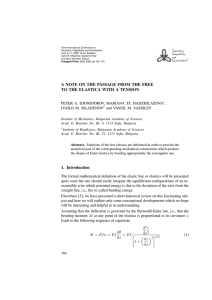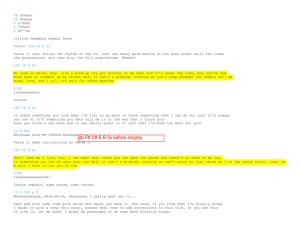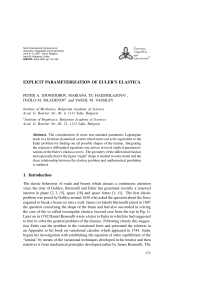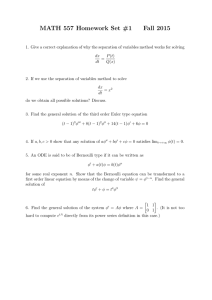EULER’S ELASTICA AND BEYOND SHIGEKI MATSUTANI
advertisement
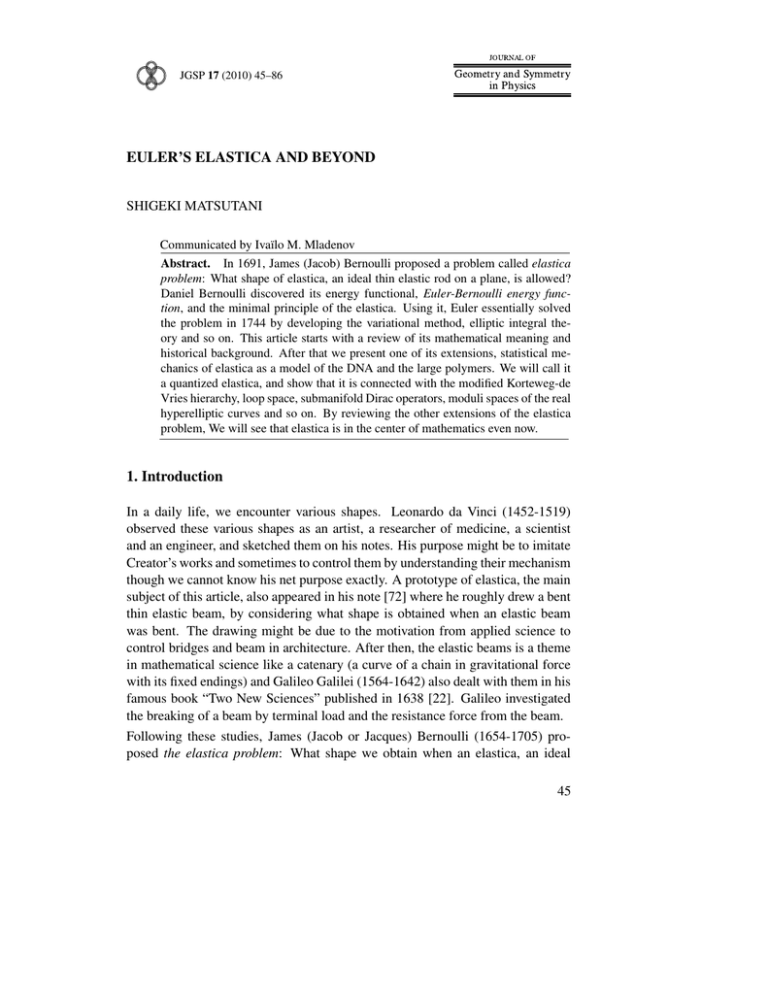
JGSP 17 (2010) 45–86 EULER’S ELASTICA AND BEYOND SHIGEKI MATSUTANI Communicated by Ivaïlo M. Mladenov Abstract. In 1691, James (Jacob) Bernoulli proposed a problem called elastica problem: What shape of elastica, an ideal thin elastic rod on a plane, is allowed? Daniel Bernoulli discovered its energy functional, Euler-Bernoulli energy function, and the minimal principle of the elastica. Using it, Euler essentially solved the problem in 1744 by developing the variational method, elliptic integral theory and so on. This article starts with a review of its mathematical meaning and historical background. After that we present one of its extensions, statistical mechanics of elastica as a model of the DNA and the large polymers. We will call it a quantized elastica, and show that it is connected with the modified Korteweg-de Vries hierarchy, loop space, submanifold Dirac operators, moduli spaces of the real hyperelliptic curves and so on. By reviewing the other extensions of the elastica problem, We will see that elastica is in the center of mathematics even now. 1. Introduction In a daily life, we encounter various shapes. Leonardo da Vinci (1452-1519) observed these various shapes as an artist, a researcher of medicine, a scientist and an engineer, and sketched them on his notes. His purpose might be to imitate Creator’s works and sometimes to control them by understanding their mechanism though we cannot know his net purpose exactly. A prototype of elastica, the main subject of this article, also appeared in his note [72] where he roughly drew a bent thin elastic beam, by considering what shape is obtained when an elastic beam was bent. The drawing might be due to the motivation from applied science to control bridges and beam in architecture. After then, the elastic beams is a theme in mathematical science like a catenary (a curve of a chain in gravitational force with its fixed endings) and Galileo Galilei (1564-1642) also dealt with them in his famous book “Two New Sciences” published in 1638 [22]. Galileo investigated the breaking of a beam by terminal load and the resistance force from the beam. Following these studies, James (Jacob or Jacques) Bernoulli (1654-1705) proposed the elastica problem: What shape we obtain when an elastica, an ideal 45
